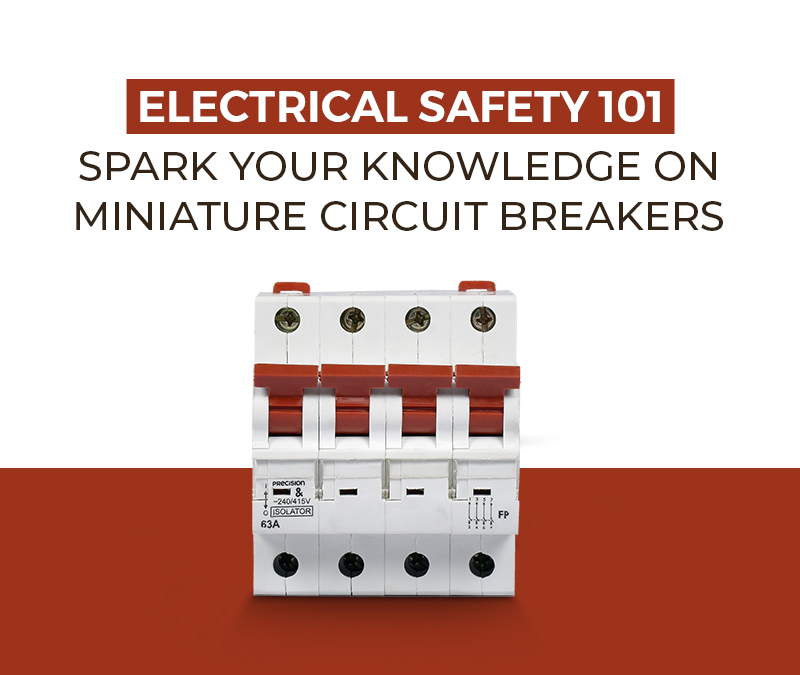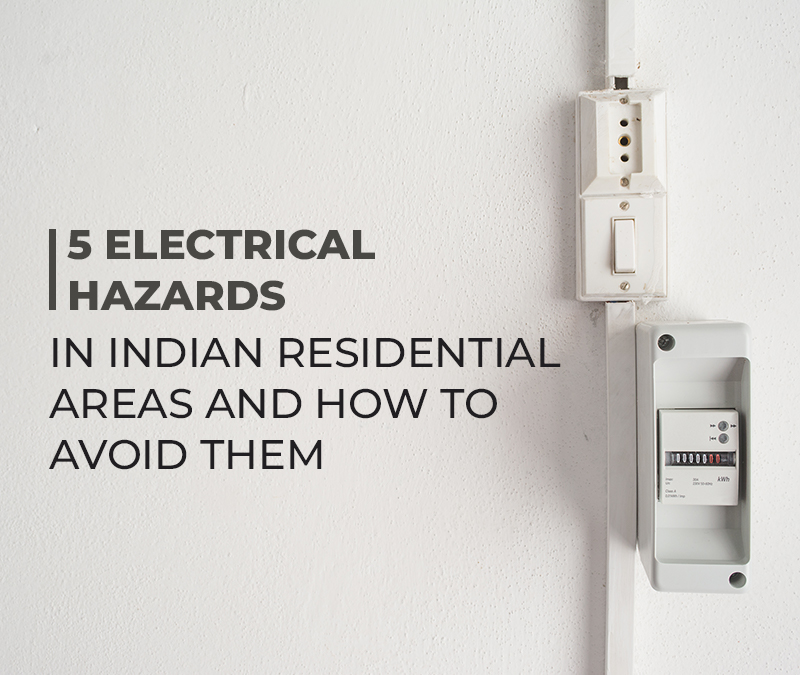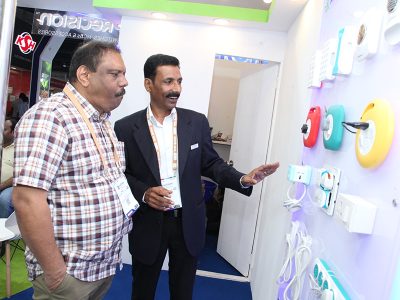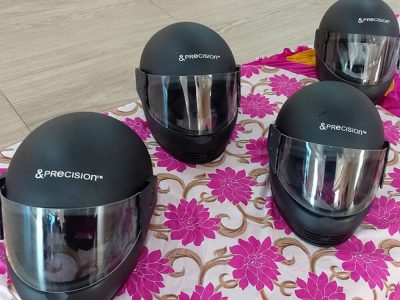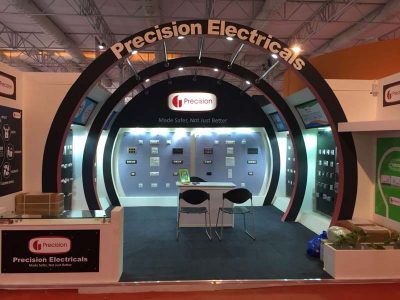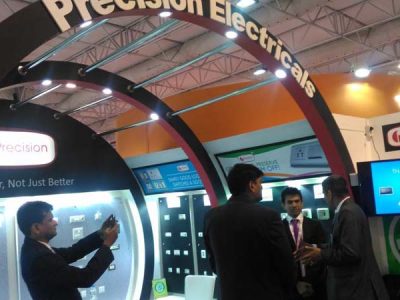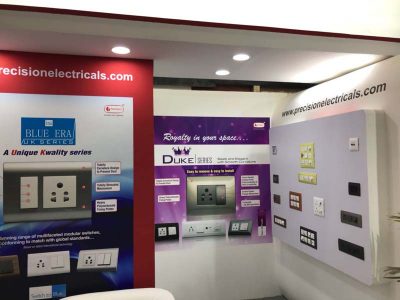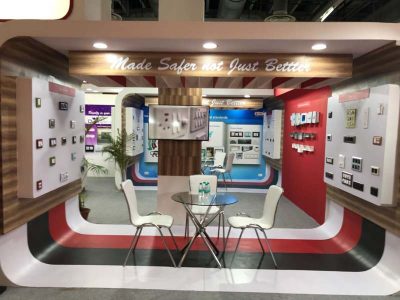
5 Winter Electrical Solutions for Homeowners
January 22, 2024
Switching for Safety: Advancing Workplace Security with Electrical Solutions
February 21, 2024Electrical Safety 101: Spark Your Knowledge on Miniature Circuit Breakers
A menace lurks in the midst of our daily lives. Imagine this scenario. A sudden surge in electrical current, an unattended appliance left switched on, or faulty wiring leads to a short circuit. In an instant, these seemingly mundane situations can escalate into a serious threat, causing electrical fires and damage to appliances. This is where the unsung hero of electrical safety steps in – the miniature circuit breaker (MCB).
The Miniature Circuit Breaker’s Mechanism of Action
MCBs are akin to your home circuit’s watchmen. They tirelessly monitor the electrical circuits in our homes. With a myriad of electronic devices humming in the background, there’s always the risk of overcurrent and short circuits.
Their mechanism of action is simple. When an abnormal current flows through the circuit due to overloading or a short circuit, the MCB detects the anomaly and swiftly interrupts the electrical flow, cutting off the power supply to prevent potential hazards.
The heart of an MCB is a bimetallic strip that bends when exposed to excessive current. This bending triggers the tripping mechanism, breaking the circuit and isolating the faulty section. The MCB’s ability to respond rapidly is crucial in averting electrical disasters, offering a level of protection that is both proactive and efficient.
Types of MCBs: Tailored Protection for Every Need
MCBs come in various types, each designed to cater to specific requirements. The most common types include:

Single Pole MCB (SP)
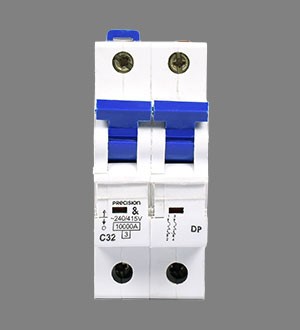
Double Pole MCB (DP)
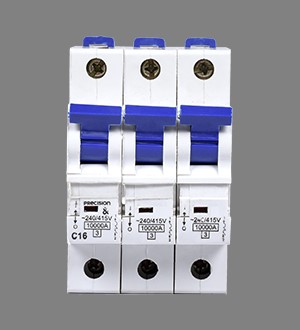
Three Pole MCB (TP)
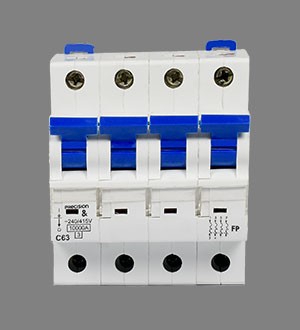
Four Pole MCB (FP)
Type B, C, D MCBs: These types categorize MCBs based on their response time to overcurrent. Type B has a slower response suitable for domestic circuits, Type C is ideal for general circuits, and Type D is for circuits with high inrush currents.
Choosing the right type of MCB depends on the specific electrical setup, ensuring a tailored approach to safeguarding your home.
Common Problems and Solutions: Troubleshooting MCB Woes
While MCBs are reliable guardians, they are not immune to issues.
Understanding common problems and their solutions can help ensure the seamless operation of your electrical safety net.
- Tripping Without Apparent Cause:
- Cause : Overloaded circuits or short circuits can lead to frequent tripping.
- Solution: Identify the source of the overload or short circuit and rectify the issue. Distribute the load across different circuits to prevent overloading.
- Difficulty in Resetting the MCB:
- Cause: Mechanical wear or faults in the MCB mechanism.
- Solution: If resetting becomes challenging, it’s a sign of internal damage. Replace the MCB promptly to maintain effective protection.
- Constant Tripping
- Cause: A faulty MCB or a persistent fault in the circuit.
- Solution: Consult with a qualified electrician to identify and rectify the root cause. Replace the MCB if necessary.
- Inability to Turn On:
- Cause: Internal damage or a malfunction in the MCB.
- Solution: Replace the MCB immediately to restore proper functioning.
In conclusion, miniature circuit breakers are indispensable components in our electrical systems, offering swift and reliable protection against overcurrent and short circuits.
Understanding their mechanism of action, the different types available, and troubleshooting common problems empowers homeowners to maintain a safe and secure electrical environment. Regular checks, prompt replacements, and adherence to electrical safety guidelines ensure that MCBs continue to be steadfast guardians, quietly working behind the scenes to keep our homes and businesses safe from electrical hazards.


